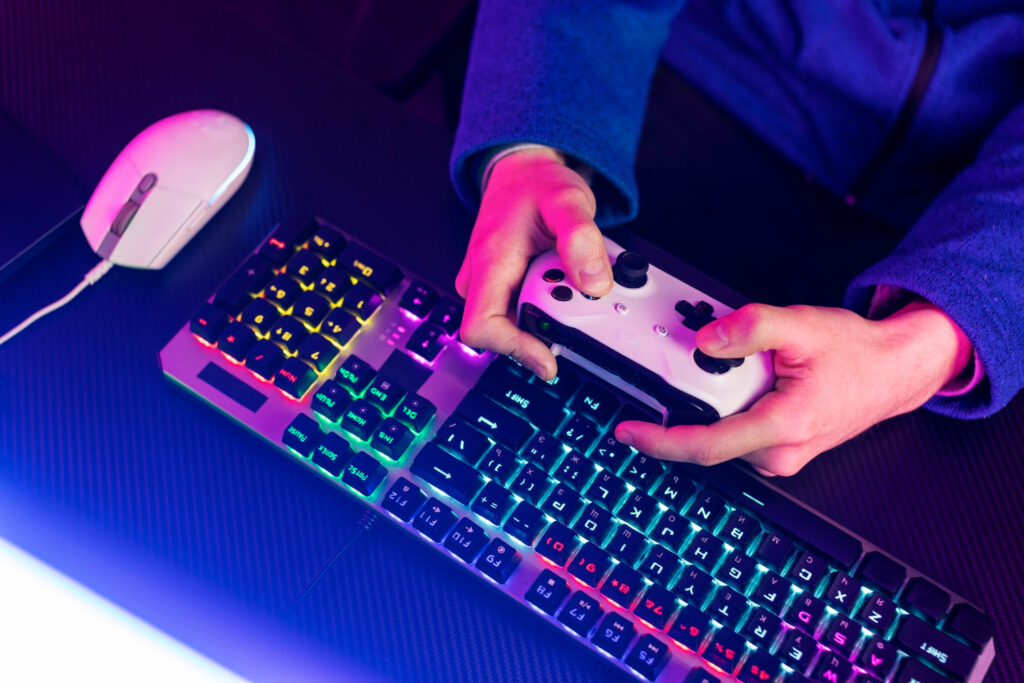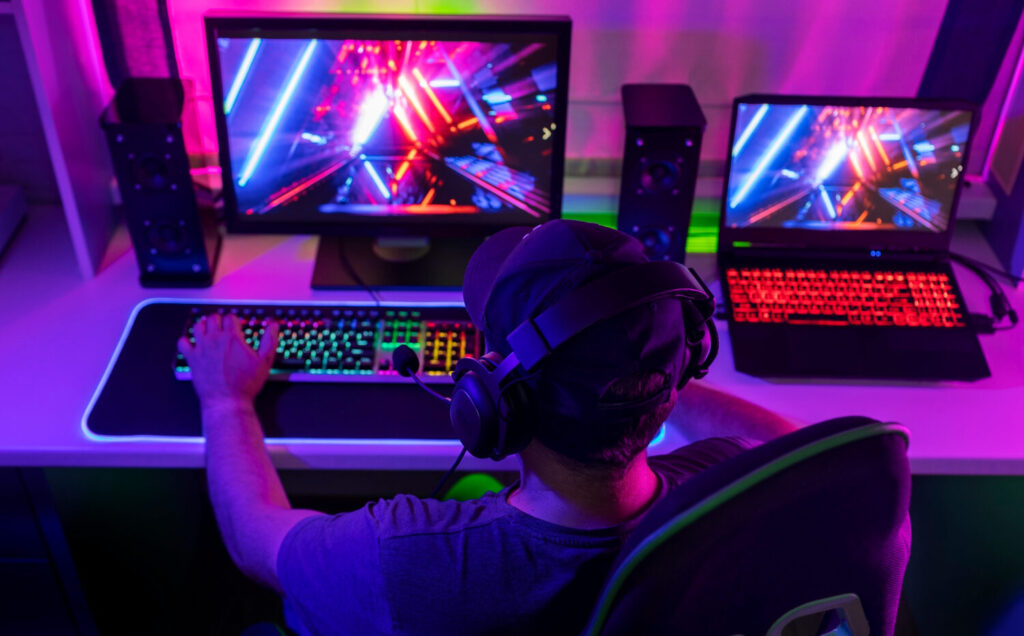A relative boom in gameplay research has provided new understanding of the multidimensional relationship between music and play, allowing players to become more deeply immersed in video games.
The study of video game music is called ludo musicology. This term takes into account the anthropological, psychological, cultural, social, economic, and musicological aspects of music used in video games.
Additionally, we explore various aspects of video game music, including its history, audio, interactivity, technology, and music composition.
 The psychological impact of Ludo musicology has become of great interest, as several studies have been published commenting on the immersive experience, enhanced player performance, and physiological effects of using music in video games. Masu.
The psychological impact of Ludo musicology has become of great interest, as several studies have been published commenting on the immersive experience, enhanced player performance, and physiological effects of using music in video games. Masu.
Gameplay models represent a key element in structuring the gameplay experience as they relate to all modes of immersion.
They illustrate the complex internal organization of games and focus on consciousness as structured by interaction.
Examples of gameplay models include the SCI model and the ALI model.
The SCI model is a heuristic model that includes three components: sensory immersion, challenge-based immersion, and imaginative immersion. Sensory immersion is when the player is fully focused on the game world and its stimuli.
This may be achieved with a large screen close to the player's face and powerful sound.
The goal is to overwhelm the sensory information coming from the real world.
Challenge-based immersion is achieved when there is a satisfying balance of challenge and ability, while imaginative immersion is achieved when the player becomes absorbed in the story and game world.
Another expression of gameplay is the ALI (Affective, Literacy, and Interaction) model.
The ALI model attempts to explain the meaning and identification of video game music. The three elements are musical emotion, media literacy, and interaction.
This model emphasizes the importance of the emotional connections that video game players create through music. Emotions are related to memory, emotion, and identification, and are often influenced by media literacy. Players who have prior knowledge of certain metaphors and musical conventions can assimilate them on a subconscious level through other audiovisual media.
player experience
Music plays an important role in game immersion, as supported by the ALI and SCI models. When a game creates a spatial presence, players begin to feel as if they are “out there” in the world.
Spatial presence involves the use of images, movement, sound, etc. in a game to help players consciously or subconsciously form a mental model that determines whether they feel as if they are in an imaginary world. This includes:
Immersion is the feeling of being completely captivated by another reality that dominates our entire attention and perceptual system.creating this illusion
It often goes hand-in-hand with the entertainment value of a game. Immersion is often reported along with a lack of awareness of time. Adding music has been shown to increase the sense of immersion in a space, or the feeling that the player is actually there.
 Background music has been proposed to make video game environments more authentic and convincing, allowing players to form a richer mental model of the game world.
Background music has been proposed to make video game environments more authentic and convincing, allowing players to form a richer mental model of the game world.
Video game music can be used to facilitate a particular experience for the player.
For example, by creating associations between musical sounds and actions or situations, auditory cues can be used to improve not only the player's experience but also their performance.
Sound features can provide players with basic in-game information, such as whether a certain point has been achieved through an action, a mission has been completed, or whether there are enemies waiting for the player ahead. A high-pitched sound (usually a small bell sound) is commonly associated with reward, and a rising or falling glissando signifies an increase or loss of energy for the character.
This type of relationship assumes that the player recognizes the integration of sound elements and video game mechanics. Therefore, players can decipher its meaning and make in-game decisions.
Background music can complement gameplay and enhance the in-game story by creating new and engaging worlds for users to escape to. Game soundtrack music not only triggers individual associations, but also memories of associated media experiences, such as movies (characters, scenes, actions, etc.) that can influence the player's imagination and overall enjoyment of the game. may also be activated.
When video game players learn to recognize the characteristics and structure of the music used in the game, they become more actively involved in the dynamics of the world.
During game music development, composers create sounds and music that fit the overall narrative setting, atmosphere, and visual aesthetic of the world. Additionally, the soundtrack often matches what's happening in the game's situations.
For players, when instruments and sounds match the game world, they are more likely to feel that world is more realistic and legitimate.
Music can be used as a storytelling tool by highlighting the emotions and themes of the story, especially those that recur throughout the game. Additionally, music can enhance the emotional impact that story events, such as battle scenes, have on players.
The development and evolution of musical themes as the story progresses strengthens the connections and emotions of the changes in characters and locations. Additionally, it helps players represent these elements in their minds so they can better recall them later. Additionally, you can also use music as a guide throughout the game.
This can help players remember the various elements of the story associated with melodies and musical patterns, thereby strengthening their emotional connection to those elements.
In this way, players can immerse themselves more deeply in the game's story and world.
 Music can also enhance immersion by targeting emotional effects on players.
Music can also enhance immersion by targeting emotional effects on players.
Research has shown that musical elements can trigger or amplify certain emotions in players. For example, if a game contains fragments of music with rapidly changing frequencies, non-standard harmonies, or imitating animal sounds or screams during the appearance of a boss enemy, the game may be It can activate or intensify emotions.
Overall, the effects of video game soundtrack music are associated with greater positive emotional responses and enjoyment during gameplay, depending on the extent to which players value more intense emotions.
This effect applies equally to the positive emotions elicited from video game music, such as the relief and pride players experience when listening to happy music when defeating a boss enemy. However, one study found that players felt more immersed when they were enjoying music.
Therefore, a poorly designed soundtrack can hinder a player's ability to feel immersed in the game.
When properly developed, musical soundtracks strengthen players' emotional connection to the story, characters, and game world.
player performance
Music not only increases player immersion, but also improves performance in games.
According to one study, music included in video games improves players' high scores. A male gamer was able to earn almost twice as many points when playing his first-person shooter game DOOM with sound on as compared to when playing without sound. In other studies, results were more mixed.
When playing a driving game, those playing with “highly stimulant” music drove the fastest, but also made the most mistakes, such as hitting fences and knocking over road cones. I made a mistake.
However, in role-playing games such as The Legend of Zelda, players performed poorly when playing with both music and sound effects turned off.
Improved performance as game audio is gradually added.
The same study found that participants performed best when playing with unrelated boombox music playing in the background. Similarly, other studies have shown that the presence of player-selected music not only improves game enjoyment, but also performance.
Compared to when researchers selected more arousing music, players were more effectively perceived as least distracting and experienced less tension and anxiety. The reason why music improves player performance may be due to enhanced active cognitive control during music playback.
Background music adds cues to your game, such as linking sound patterns to enemy attacks, giving players time to respond appropriately or quickly correct their actions.
 They then begin to memorize and recognize certain musical cues in the game, which helps them improve their performance in the future.
They then begin to memorize and recognize certain musical cues in the game, which helps them improve their performance in the future.
Physiological effects
Finally, the physiological effects of music in gaming have also received significant research interest. Studies have shown that accompanying music to game play increases cortisol levels, indicating that auditory input significantly contributes to the stress response seen during video game play. Research shows that there is an effect of sound on physiological activity.
For example, classical music has been shown to have a relaxing effect on listeners, as well as cause lower blood pressure and heart rate. On the other hand, when listening to rock/techno music, listeners experienced increased self-ratings of anxiety, aggression, tension, and discomfort.
Additionally, participants found that their heart rate, systolic blood pressure, and cortisol levels increased significantly when they listened to heavy metal, rock, or techno music. “First-person shooter” games typically use techno or rock music, so the effects found in this study are representative of those found in these games.
Video game music. Whether soundtracks originate from musical compositions created specifically for the game, or are derived from adaptive reuse of orchestral pieces from the production of television shows and films, the music emphasizes the action. Even simple sound effects intended to enhance the experience have been shown to enhance the experience.
Original music created for games is finding new sources of revenue as standalone content that is repurposed into advertising, ringtones, or other film/TV content (both long-form and short-form). Game music is readily available in the vast amount of user-generated content on TikTok and YouTube.
Because of the impact on user experience and the potential for revenue streams other than game purchases, game companies are investing in the creative process of creating original music for their games.
This trend has created new opportunities within the creative community. Empirical evidence informs this investment.
 As science advances in the field of musicology, investment will certainly increase. As technology advances, so do the sounds and music included in modern games.
As science advances in the field of musicology, investment will certainly increase. As technology advances, so do the sounds and music included in modern games.
Most major game producers have incredibly large sound departments, with dozens of composers, voice actors, foley artists, and sound engineers.
New technologies around AR and generative AI will challenge these music artists to create more immersive experiences and soundscapes within game experiences.
The future of rudo musicology will undoubtedly be fascinating.
* Emily E. Garcia, Tulane University Senior, RSG Media Intern *
============================================
Click here to download the full .PDF version of this article
Click here to download the entire Winter 2023 M&E Journal


